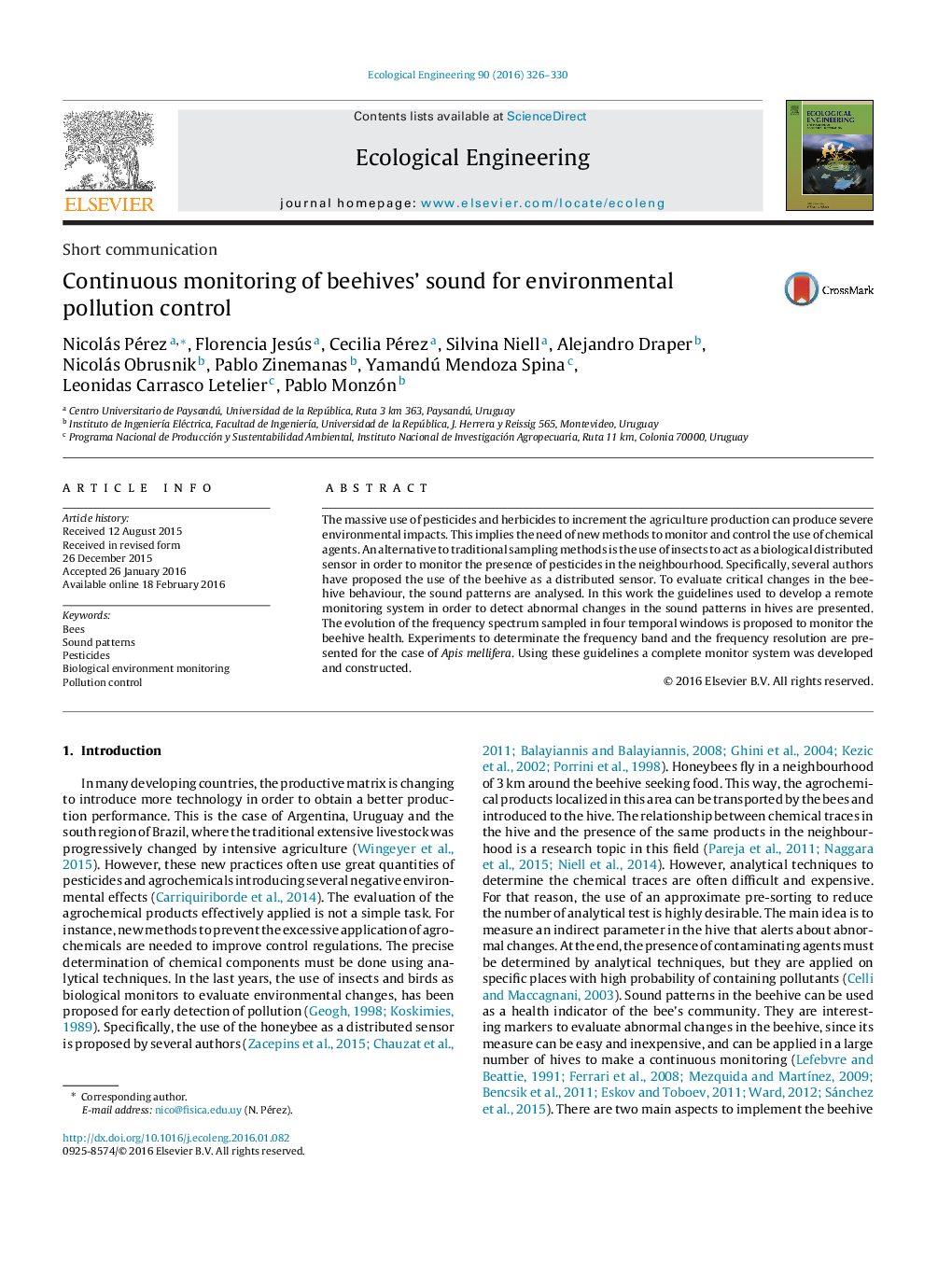| Article ID | Journal | Published Year | Pages | File Type |
|---|---|---|---|---|
| 4388677 | Ecological Engineering | 2016 | 5 Pages |
The massive use of pesticides and herbicides to increment the agriculture production can produce severe environmental impacts. This implies the need of new methods to monitor and control the use of chemical agents. An alternative to traditional sampling methods is the use of insects to act as a biological distributed sensor in order to monitor the presence of pesticides in the neighbourhood. Specifically, several authors have proposed the use of the beehive as a distributed sensor. To evaluate critical changes in the beehive behaviour, the sound patterns are analysed. In this work the guidelines used to develop a remote monitoring system in order to detect abnormal changes in the sound patterns in hives are presented. The evolution of the frequency spectrum sampled in four temporal windows is proposed to monitor the beehive health. Experiments to determinate the frequency band and the frequency resolution are presented for the case of Apis mellifera. Using these guidelines a complete monitor system was developed and constructed.
